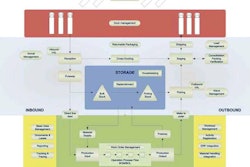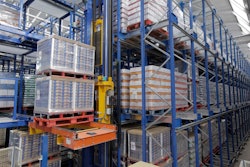
Duct tape and bailing wire. It’s the punch line to many a joke. It also describes how many of today’s supply chain systems evolved over time.
A provider in the supply chain starts a business, using a basic accounting program to manage transactions. However, as the business grows, other suppliers tap into the system, requiring a modified interface to effectively manage the transactions. As shipments go out, a transportation partner wants in, and more accommodations are made.
A new system is added to the accounting program and soon, the warehouse expands. Another system is added. And then another and another, until 12 different systems clumsily transfer data, from procurement to warehouse to transportation and back, using a jerry-rigged management tool designed to infinitely finagle the interfaces.
I don’t mean to make light of the situation, because there are good reasons systems evolve this way. But it does beg the question: ‘Is there a better way to manage the business? Would not a more integrated supply chain ecosystem, engineered to automatically transfer data—securely, seamlessly and intuitively—make more sense?’
It might. But first, let me address the incentive to carry on with business as usual.
Comfort in the status quo
There is a risk to overhauling the status quo. Stand-alone systems, already in place, create familiar comfort zones within an organization. New programs and procedures require change—and change, as scary as it may be, will percolate resistance.
What’s more, there is a cost involved in migrating from a series of disparate systems to an integrated supply chain model. Stand-alone systems typically don’t cost much to plug and play. Even the “interface finagling” can be accomplished at minimum expense.
However, programming an open, pliable enterprise solution that connects trading partners across various platforms can be an expensive proposition—not to mention the effect such a transformation can have on the people involved. All participating parties must agree to the design. As new systems and procedures are adopted, training becomes an expense and mistakes will be made. Before all is said and done, the data must be migrated, creating a fair amount of anxiety up and down the party lines. And consultants—especially the good ones—are never cheap.
All things considered, a good degree of inertia exists to leave well enough alone. However, well enough will not be good enough as our digital connected global marketplace takes shape.
Let’s say I have a dozen systems cobbled together in serviceable fashion. I send a purchase request to my supplier in China, expecting product to be available and shipped shortly after. But unbeknownst to anyone, within hours of my receipt, their warehouse in Shanghai goes up in flames and product becomes unavailable for several weeks.
In a stand-alone system, my purchasing agent must now contact customer service to research all customer orders related to the product. Do I have enough in stock left over to fulfill standing orders or I do need to offer a substitute? If I need to offer a substitute, do I have it in stock? If so, how do my customers want the exception handled? How do my supply partners want the exception handled?
The manual back work required to reconcile the situation could be more than maddening—it could be very expensive, even costing future business.
Value in a fully integrated environment
In a fully integrated supply chain environment, however, the system runs the traps. It instantly reports the incident to my supply chain partners, communicating automatically with my customers what’s in stock; what else is available; and requesting their preference on how they want their pending orders managed.
Based on their response, the system then automatically requests replacement product from appropriate warehouses throughout the network. Meanwhile, all paperwork, debits and credits register electronically; and every customer involved is sent an apology email with a discount offer good toward their next purchase.
As a result, no one intervenes, time is saved, money is saved, brand reputation is preserved—the entire supply chain benefits.
The value of implementing a flexible, integrated supply chain is obvious. If it can lower your cost to handle an exception, imagine what it can do for your bottom line by handling thousands of packages this efficiently every day.
If you could automate rebates, charge backs and other shared services using a system such as this, would it not follow that you also could negotiate more favorable vendor terms? Certainly. A system as responsive as this would not only lower your cost to serve, it would improve your quality of service and separate you clearly from the competition.
The roadmap for success
So, what’s holding you back? Maybe you already have a hodgepodge of stand-alone systems entrenched and the thought of migrating is just too overwhelming to bear. Or, maybe you just acquired a company and the dust has yet to settle.
There are plenty of reasons not to act. But, if you begin now, you can get there sooner than you think—and at a lower overall expense.
The secret is in the planning. Instead of managing your IT assets in reactionary mode, plan pre-emptively to evolve to a more integrated solution over time. Gather your IT, marketing, operations, HR, warehouse, purchasing, transport and customer service executives—together with a few key vendors—and whiteboard what a totally integrated solution might look like.
Begin with the end in mind. Anticipate mergers and acquisitions. Expect growth spurts and downward trends. Ask for input. Explore the “what if’s.” Target your aging assets for accelerated integration. And always ask yourself: ‘What will yield the greatest value?’
As you plot your one-to-five-year IT strategy, consider how you can compress your disparate systems from 12 to eight to four—to one master ERP ecosystem over time.
If you have a vision of where you want to go, a roadmap detailing how to get there soon will emerge. The duct tape and bailing wire will fall away. And a new, streamlined, forward-looking model of your supply chain will begin to take shape, lifting your enterprise to new levels of profitability and success.















![Pros To Know 2026 [color]](https://img.sdcexec.com/mindful/acbm/workspaces/default/uploads/2025/08/prostoknow-2026-color.mduFvhpgMk.png?ar=16%3A9&auto=format%2Ccompress&bg=fff&fill-color=fff&fit=fill&h=135&q=70&w=240)



